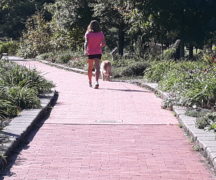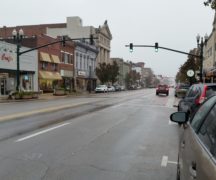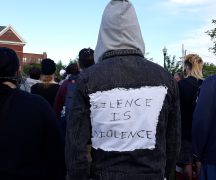By JAN LARSON McLAUGHLIN
BG Independent News
With the time ticking away before Bowling Green City Council votes on the proposed zoning code update, residents are trying to make sure their concerns are heard. Citizens were assured Tuesday evening that there is still time to have input.
Though the audience at Tuesday’s City Council meeting included many who have voiced concerns about the controversial pedestrian residential zoning category, just four went to the podium to speak. All live on historic streets in the city that are proposed for pedestrian residential zoning that will allow some small businesses to operate next to homes.
John Sampen talked of the “unique architectural heritage” of the city – with many Victorian and Federalist buildings preserved.
“I’m a staunch champion of Bowling Green historic districts,” said Sampen, who owns a home on North Maple Street and is a member of the Bowling Green Historic Preservation Commission.
Sampen said his primary concern is that putting businesses in residential neighborhoods will draw customers away from downtown businesses.
The placement of businesses in neighborhoods could also make the areas less desirable for homeowners. Owning a historical home requires investment by an owner, Sampen said.
“They need some assurances of stable property values,” he said. That stability will be at risk if commercial uses push a neighborhood beyond the “tipping point,” Sampen said.
Kathleen Dennis, who has lived in many communities, said she chose Bowling Green as a place to retire. She said Bowling Green has been lacking in its efforts to engage the community on the proposed zoning code changes.
“You need to bring your community together and find out what they want,” she said.
Dennis also cautioned City Council about potential watershed problems since the new pedestrian residential zoning could create more impervious surfaces in areas with combined sanitary and stormwater sewers.
Fern Kao, of Buttonwood Avenue, asked how many City Council members live in areas proposed for the pedestrian residential zoning. Two – Jeff Dennis and Nick Rubando – raised their hands.
Kelly Mangan, of Eberly Avenue, also talked about a lack of communication, with her first notification of the zoning update being from a citizen-generated door-hanger. She has tried to catch up with the update efforts by watching videotaped city meetings, but she wondered about amendments made during council work sessions.
“It’s extremely hard to find out what you have done – so we’re not spinning our wheels,” Mangan said. “Is there still room for amendments and input? I still have concerns.”
City Council member Rachel Phipps, who has been leading the zoning work sessions, said the firm working with the city on the zoning update is creating a clean draft of the proposal. Once that is complete, the city will hold public forums specifically on the pedestrian residential zoning, and on the overall update. There is still time for other edits, Phipps said.
Council will have three readings of the ordinance and hold a final public hearing, before voting on the zoning update, she explained.
“We want to get this right,” Phipps said.
Also at Tuesday’s meeting:
- Public Service Director Joe Fawcett reported that the city continues to receive citizen complaints about the private communication companies working on their properties. Fawcett instructed council members to relay complaints to him, so he could connect concerned residents with the contractors.
- Council was reminded that a public hearing will be held prior to the next council meeting on Jan. 17, at 6:30 p.m., on revisions to the Bicycle Facilities and Destinations Map in the transportation section of the city’s comprehensive plan.
- Council President Mark Hollenbaugh remarked on the demands on first responders in the city over the holidays. “I’m always impressed with the hard work, dedication and professionalism” of city employees, he said. He extended his thanks to the fire chief, police chief, and those responding during the frigid weather.





